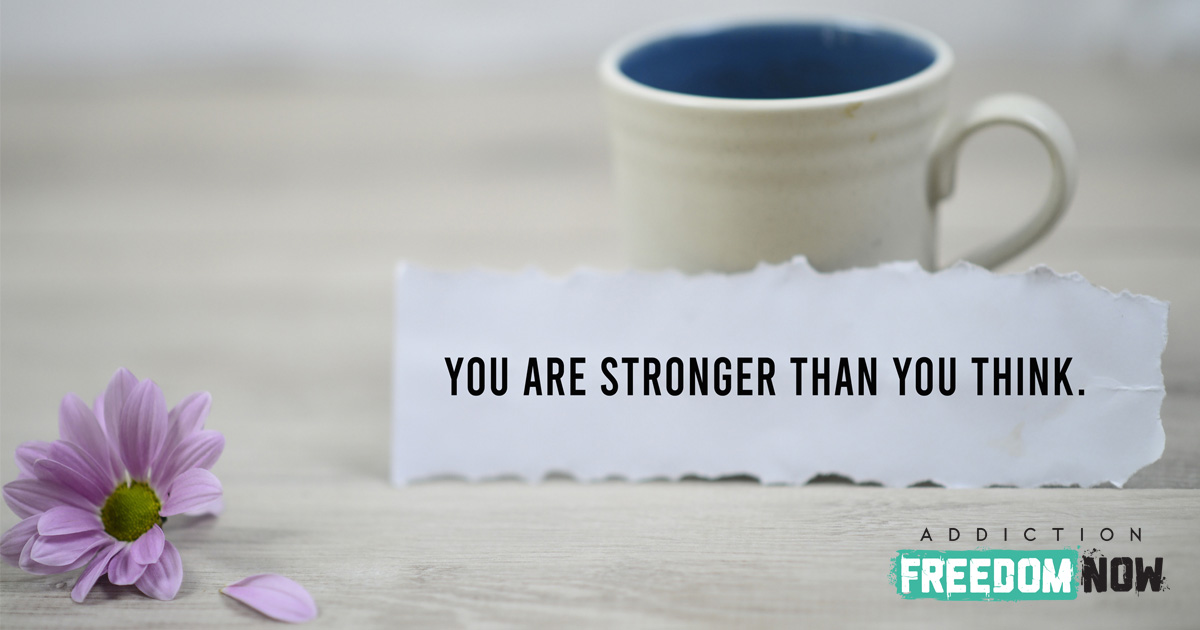Fortunately, there are a variety of methods designed to help people in substance use recovery identify and make the changes they need to continue healing. That’s where a Wellness Recovery Action Plan (WRAP) can come into play for you. WRAP is an amazing tool developed to help those in recovery learn how to regulate their emotions and feel confident in their decisions.
Recovery takes time and isn’t an easy feat for anyone. It often comes with complex emotions and disconcerting feelings, regardless of where you may be on your recovery journey. In addition to this mental load, every person that chooses recovery embarks on a journey that’s unique to them. This means that each person will require tools tailored to their individual needs in order to achieve their goals.
What Is a Wellness Recovery Action Plan (WRAP)?
So, what is an action plan in recovery? The Wellness Recovery Action Plan, more commonly known as WRAP, is a straightforward process that helps individuals develop unique approaches to address the emotional difficulties they face. Created over 25 years ago by Mary Ellen Copeland, WRAP is designed to help people not only recognize their emotions but their own distress patterns so that they can better learn to manage them. Building this awareness allows individuals to create planned responses to difficult emotions, giving them more control over situations where they often feel helpless.
Rooted in self-empowerment, WRAP focuses on creating an individual wellness action plan that can help you feel confident in your choices and your healing process. However, WRAP can also implement steps for others in the event that you cannot take care of yourself or keep yourself safe. In this way, WRAP can be useful for almost anyone who feels overwhelmed or helpless due to changing emotions during recovery.
By using WRAP in your journey of recovery, you will:
- Discover effective tools and methods that help you take care of yourself.
- Create a daily routine that helps you stay on track and keep up with your goals.
- Identify issues and stressors that may make your situation more difficult.
- Learn how to reach out for help and get the support you need when you need it.
What Is a Wellness Toolbox and What Should Be in It?

Before you begin creating your WRAP, it is essential to have a wellness toolbox in place. In fact, your wellness toolbox is the foundation of a WRAP. It is a list of coping mechanisms, skills, and strategies that work best for you and help you regulate your emotions in difficult circumstances.
Everyone will have a different assortment of tools in their wellness toolbox, depending on their unique situation. These tools don’t have to be complex and can be simple, accessible forms of calming yourself down or making yourself feel better.
Some examples of wellness tools include, but are not limited to:
- Breathing exercises that calm you down
- Practicing mindfulness
- Being around supportive friends
- Going for a walk when you’re anxious
- Making goals for yourself
- Writing down your anxieties, then listing ways you can work through them
- Journaling
- Exercise
What Are the Elements of a Wellness Recovery Action Plan?
In addition to your wellness toolbox, there are six major elements of a Wellness Recovery Action Plan.
These elements include the following:
Daily Maintenance Plan
Your daily maintenance plan focuses on two primary components: how you feel when you’re doing well and what you can do to help yourself feel well. Begin crafting your daily maintenance plan by describing how you feel on a good day when you’re doing well. From there, you can identify things you may need to do every day that can help you continue to feel great. Then, identify things you can do on certain days when you need to help yourself feel better. A daily maintenance plan helps to create some structure in your life and build positive routines that improve your overall health and wellness.
Triggers and Stressors
Every person in recovery has different triggers and stressors, including some that can make staying well very difficult very quickly. A trigger can be any circumstance or situation that causes you to feel uncomfortable, threatened, or worried that you may resort to your old, unhealthy habits. Stressors can disrupt your wellness even more significantly if you’re not in the right mindset. For this reason, learning what situations may be triggering for you and what stressors can make triggers more impactful can be extremely important to maintain recovery. If you can identify your own stressors, you can work to create methods for avoiding and overcoming them.
Early Warning Signs
Early warning signs are subtle signs or changes that you may notice in yourself or your life in general that may indicate an impending decrease in wellness or return of poor habits. The ability to identify early warning signs in your own life is crucial, as they can often help you realize things will worsen if you don’t take action soon. Early warning signs differ from triggers in that triggers are things that happen around you, whereas early warning signs are small changes you may notice about yourself or your environment. For example, you may notice yourself spending time in triggering environments on purpose. This and many other signs can tell you that you may need to be more proactive about protecting your wellness.
Things Are Breaking Down or Getting Worse
Once you’ve identified early warning signs, it is crucial to be able to determine when things are breaking down. When things are breaking down, it may feel like everything around you is getting worse, even when you’re trying your best to keep that from happening. When you can identify that there are compounding issues piling up and a breakdown may be imminent, you can take immediate action to prevent your situation from worsening. When things around you are feeling off, and you think they may take a turn for the worse, make a list of the signs you notice. Then, work on creating a plan to help you through it and consider seeking help from others.
Crisis Plan
Recovery is not linear. Unfortunately, this means that sometimes, a crisis may occur. By creating a crisis plan ahead of time, you can allow yourself to retain some form of control over the situation, even if it feels like everything has gone wrong. Your crisis plan will work ahead of time to outline what a crisis may look like for you, determine the supporters you may need in this kind of situation, and lay out what your supporters should and should not do to help you through. A crisis plan can also include whether you may need medical professionals, medication, and more.
Post-Crisis Plan
Creating a post-crisis plan can help you navigate the period after a crisis with a bit of structure in your life. A post-crisis plan can outline concrete goals and other actions you should take after a crisis occurs so that you can re-establish a wellness routine. During this period, you may also reevaluate the wellness tools you have been using to see if you need to implement some changes.
Benefits of Wellness Recovery Action Plan

While creating your WRAP, it’s important to keep the core values in mind. WRAP emphasizes five core values that every person in recovery should work to maintain:
Hope
Hope is one of the most important things you can have while you’re recovering. You’ll need to find hope in yourself, hope for your future, and hope that things can and will be better. Hope can give you the extra push you need to achieve your goals, stay focused, and work for the best you possible.
Personal Responsibility
Having personal responsibility is a critical aspect of both life and recovery. It is easy to become distracted by things that can negatively affect your wellness, and without personal responsibility, you stand no chance of addressing these issues. In WRAP, personal responsibility is a priority because only you can take the action you need to get better. While people can support and love you along the way, you have the power and the responsibility to get yourself where you want to be.
Self-Advocacy
Self-advocacy goes right along with personal responsibility, as it describes the action of representing yourself. It’s crucial to know when it’s time to reach out for help, but it can seem daunting to speak up for yourself when you’re struggling. However, along with self-acceptance, being able to express that you need and want help is a huge step in the right direction. Self-advocacy not only helps you approach others for help, but it helps you take the steps you need to get better. Only you can give yourself the push you need to get started.
Support
Giving and receiving support is a fundamental part of the human experience. Everyone goes through challenging times in their lives, and being able to share resources, advice, skills, and tools with one another can help all involved in many ways. Bottling up your emotions and refusing to reach out for help can affect not only your mental health but your journey of recovery, too. Don’t be afraid to ask others for advice and find people going through similar situations so that you can share mutual support.
Education
Learning about your feelings, why you feel that way, and finding coping mechanisms that can help are all important aspects of the journey of recovery. By learning all you can about every aspect of SUD and recovery, you can determine the tools and support you need to keep working towards your end goal.
Behavior Goals for WRAP and Recovery?
Beginning recovery forces people to reevaluate many distinct aspects of their lives. From the people you associate with to the situations you put yourself in, exercising self-care can require many changes. In fact, learning how to take care of yourself in this way can change your entire life.
With both WRAP and recovery, the ultimate goal is to find healthy ways to take care of yourself and reach the best version of yourself that is possible. To do so, you will need to change your behaviors.
Primary behavior goals of WRAP include:
- Decreasing and preventing intrusive, difficult, or troubling emotions and feelings.
- Increasing personal empowerment and self-esteem.
- Improving your overall quality of life.
- Helping you achieve your goals in recovery and beyond.
Wellness Recovery Action Plan for Long-Term Recovery

The journey of recovery can be extremely difficult to navigate, whether you’re going through it yourself or you’re trying to support your loved one. However, even the most difficult days of recovery are infinitely better than struggling with active addiction. With methods like WRAP in your recovery arsenal, you can give yourself the tools you need to achieve your goals and find hope and fulfillment in life once again.




